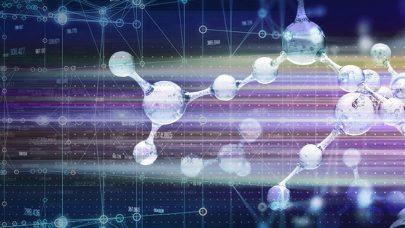


Intel’s Vision Advantage: Chips Are Available Off-the-Shelf
The chip market is facing a crisis: chip development is now concentrated in the hands of the few.
A confluence of events this week reminded us how few chips are available off the shelf, a conc …

Nvidia’s GTC Is the New Intel IDF
After many years, Nvidia's GPU Technology Conference (GTC) was back in person and has become the conference for those who care about semiconductors and AI.
In a way, Nvidia is the new Intel ID …

HPCwire’s 2024 People to Watch
Find out which 12 HPC luminaries are being recognized this year for driving innovation within their particular fields.

Google Announces Homegrown ARM-based CPUs
April 9, 2024
Google sprang a surprise at the ongoing Google Next Cloud conference by introducing its own ARM-based CPU called Axion, which will be offered to customers in it Read more…

Computational Chemistry Needs To Be Sustainable, Too
April 8, 2024
A diverse group of computational chemists is encouraging the research community to embrace a sustainable software ecosystem. That's the message behind a recent Read more…

U.S. 2024/25 Science Budgets Taking a Hit
April 8, 2024
In case you missed it, fiscal 2024/25 U.S. science budgets seem likely to take big hits despite Congressional talk of increased support, reports the American In Read more…

Hyperion Research: Eleven HPC Predictions for 2024
April 4, 2024
HPCwire is happy to announce a new series with Hyperion Research - a fact-based market research firm focusing on the HPC market. In addition to providing mark Read more…

MLPerf Inference 4.0 Results Showcase GenAI; Nvidia Still Dominates
March 28, 2024
There were no startling surprises in the latest MLPerf Inference benchmark (4.0) results released yesterday. Two new workloads — Llama 2 and Stable Diffusion Read more…

Q&A with Nvidia’s Chief of DGX Systems on the DGX-GB200 Rack-scale System
March 27, 2024
Pictures of Nvidia's new flagship mega-server, the DGX GB200, on the GTC show floor got favorable reactions on social media for the sheer amount of computing po Read more…

NVLink: Faster Interconnects and Switches to Help Relieve Data Bottlenecks
March 25, 2024
Nvidia’s new Blackwell architecture may have stolen the show this week at the GPU Technology Conference in San Jose, California. But an emerging bottleneck at Read more…

The Generative AI Future Is Now, Nvidia’s Huang Says
March 19, 2024
We are in the early days of a transformative shift in how business gets done thanks to the advent of generative AI, according to Nvidia CEO and cofounder Jensen Read more…

- Click Here for More Headlines

Whitepaper
Transforming Industrial and Automotive Manufacturing
In this era, expansion in digital infrastructure capacity is inevitable. Parallel to this, climate change consciousness is also rising, making sustainability a mandatory part of the organization’s functioning. As computing workloads such as AI and HPC continue to surge, so does the energy consumption, posing environmental woes. IT departments within organizations have a crucial role in combating this challenge. They can significantly drive sustainable practices by influencing newer technologies and process adoption that aid in mitigating the effects of climate change.
While buying more sustainable IT solutions is an option, partnering with IT solutions providers, such and Lenovo and Intel, who are committed to sustainability and aiding customers in executing sustainability strategies is likely to be more impactful.
Learn how Lenovo and Intel, through their partnership, are strongly positioned to address this need with their innovations driving energy efficiency and environmental stewardship.
Download Now
Sponsored by Lenovo
Whitepaper
How Direct Liquid Cooling Improves Data Center Energy Efficiency
Data centers are experiencing increasing power consumption, space constraints and cooling demands due to the unprecedented computing power required by today’s chips and servers. HVAC cooling systems consume approximately 40% of a data center’s electricity. These systems traditionally use air conditioning, air handling and fans to cool the data center facility and IT equipment, ultimately resulting in high energy consumption and high carbon emissions. Data centers are moving to direct liquid cooled (DLC) systems to improve cooling efficiency thus lowering their PUE, operating expenses (OPEX) and carbon footprint.
This paper describes how CoolIT Systems (CoolIT) meets the need for improved energy efficiency in data centers and includes case studies that show how CoolIT’s DLC solutions improve energy efficiency, increase rack density, lower OPEX, and enable sustainability programs. CoolIT is the global market and innovation leader in scalable DLC solutions for the world’s most demanding computing environments. CoolIT’s end-to-end solutions meet the rising demand in cooling and the rising demand for energy efficiency.
Download Now
Sponsored by CoolIT
Advanced Scale Career Development & Workforce Enhancement Center
Featured Advanced Scale Jobs:
HPCwire Resource Library
HPCwire Product Showcase
© 2024 HPCwire. All Rights Reserved. A Tabor Communications Publication
HPCwire is a registered trademark of Tabor Communications, Inc. Use of this site is governed by our Terms of Use and Privacy Policy.
Reproduction in whole or in part in any form or medium without express written permission of Tabor Communications, Inc. is prohibited.
































